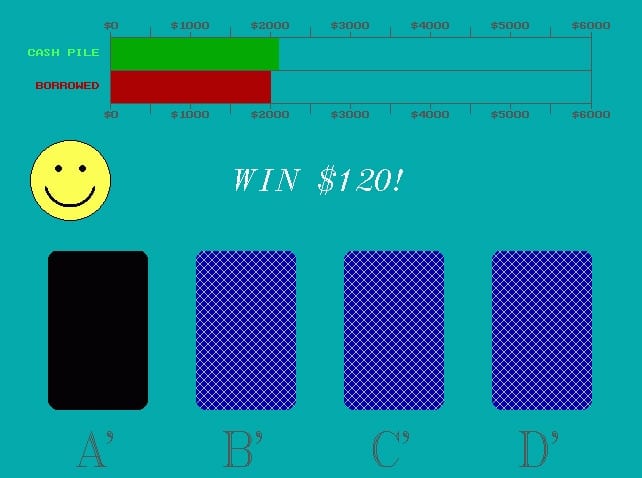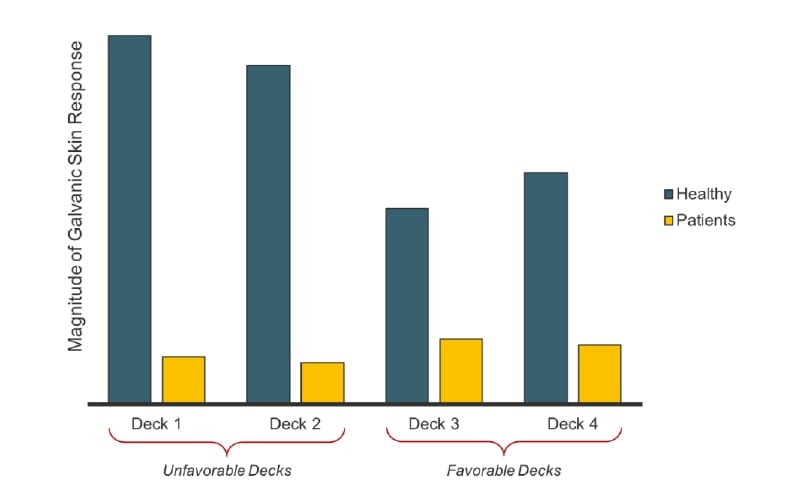We like to believe that we interact with the world around us in rational, deliberate ways – that when we make a purchase decision, it’s because we weighed the costs and benefits of Product A versus Product B, and decided that Product B was the more economically efficient choice for us.
We like to believe that our choices are logical and practical; it’s otherwise implied that we’re not in control of our decision-making. Of course, as a behavioral scientist, you know that the latter is closer to reality than the idea that we’re perfectly utilitarian. With minimal reflection, we can all think of “snap” decisions that we’ve made that we’d like to take back.
In truth, reflecting and deliberating over every decision we make would be an extremely inefficient way to navigate our world: Should we spend minutes, or hours of our day carefully considering which breakfast will provide us with the maximum caloric efficiency, based on time of day, availability of ingredients, what time we plan to eat our next meal, and so on? That may work for some people, but for the rest of us, we wake up hungry and that slice of coffee cake looks pretty darn tasty. We eat it without much thought, and move on with our lives.
So, if we’re not perfect, pragmatic machines when it comes to decision-making, then what else is influencing us? The short answer is, “lots of stuff, but we’re not totally sure about any of it”. A bit unsatisfying, sure, but also an accurate reflection of the complexity of human cognition. However, for the past several decades, one potential explanation has been utilized by everyone from behavioral economists studying financial behavior to neurologists trying to understand addiction and risky behavior: Antonio Damasio’s Somatic Marker Hypothesis [1].
Emotions Guide Decisions
Let’s pretend that you and I are playing a game, involving four decks of cards. All of the cards have a point value. On your turn, you draw a card from one of the four decks, and if it’s worth above a certain point value, I’ll give you $10; if it’s below a certain point value, you owe me $10.
We play a few rounds of the game, and something interesting happens: At first, you’re more or less breaking even monetarily. After about 10 minutes, though, you start winning a little more consistently. After half an hour of the game, you’ve won quite a bit of money off me. You feel proud that you’ve bested me at my own game; You may even believe that you’ve developed a “sixth sense” that’s helping you hit high cards, and avoid low cards. In truth, you’re not incorrect – except that you haven’t suddenly developed some mystic divination skill, but rather are experiencing “somatic markers” at work.
What I’ve described above is a version of a classic experimental paradigm called the Iowa Gambling Task [2], in which one of the four decks is very slightly rigged against you, and one of the decks is very slightly rigged in your favor. The changes to those decks are so subtle that you probably couldn’t articulate what was happening, but your behavior showed that you started drawing more frequently from the favorable deck, and that you generally avoided the punishing deck.

When we have an emotional response to something – for example, winning or losing money – there are a number of physiological effects that happen. Your heart rate may change, your electrodermal activity (EDA) may increase, your pupils may dilate. Aside from the fact that someone else could measure those physiological changes in the moment, your brain is also taking note: It is storing information about whatever elicited the emotional response, to access that information later to facilitate decision-making.
You don’t realize that you’re developing a preference for the favorable deck, just like you don’t deliberate in front of your fridge for hours in the morning. You draw your card and make some money, you eat your slice of coffee cake, and you keep on moving.
The Somatic Marker Hypothesis
The Iowa Gambling Task example is a demonstration of the “somatic markers” at work. Damasio introduces the Somatic Marker Hypothesis in his seminal book, Descartes’ Error, based on years of research from neurology, psychology, and psychophysiology.
Briefly, the Somatic Marker Hypothesis – from the Greek, soma, meaning “body” – suggests that:
1. When something elicits an emotional response from us, there are a number of brain-based responses that occur which guide our present and future decision-making;
2. Many of those responses, such as changes in electrodermal activity, are directly-measurable indicators of cognitive-emotional processes.
Returning to the Iowa Gambling Task example above, imagine that I was measuring your electrodermal activity while we played the game together. What would I see? First, because the task involves rewards and punishments, I would likely see that your EDA would increase immediately before you drew a card from any pile. This is an “anticipatory” response, reflecting your anticipation of either gaining or losing money.
Interestingly, though, after a little while that GSR response would not be equal across all of the piles: After only a few minutes of the game, you would start to show the most elevated GSR before you picked from the deck that was rigged against you. Most interesting of all, this effect would happen before you even started learning to avoid the rigged pile – in other words, your brain starts recognizing the pattern that one deck is bad, well before you may be consciously aware of it.
Additionally, patients with damage to a part of the brain called the ventromedial prefrontal cortex (vmPFC), which is complicit in processing “reward” (among many other things), do not show this same anticipatory EDA increase (Figure 1). One of the typical “hallmarks” of vmPFC damage is severely impaired decision-making, and these data suggest that the presence of anticipatory EDA increases in healthy participants (and not patients) reflects emotion-based decision-making processes.

Figure 1. Adapted from Bechara (2004). Magnitude of galvanic skin response (also referred to as electrodermal activity), for healthy controls (blue) and patients with vmPFC lesions (yellow), prior to selection of a card from either an unfavorable or favorable deck. Healthy controls show significantly increased GSR prior to selecting from an unfavorable deck rather than a favorable one; patients show no difference in GSR across the four decks.
In short, the Somatic Marker Hypothesis suggests that when something gets an emotional response from us (such as the prospect of gaining or losing money), that there are physiological changes that happen. These physiological changes both guide our behavior in the moment – helping us avoid the “bad decks” and draw from the good ones – and also help inform future decisions by creating decision-making “markers” in our brains that can be utilized later.
Going With Your Gut
We’ve all likely made decisions in our lives where we’re happy that we “went with our gut instinct”, or where we’ve lamented the fact that we didn’t. The Somatic Marker Hypothesis posits that this is more than just a handy colloquialism to explain why we did, or didn’t, do something.
Our “gut instinct” is likely a very real combination of physiological responses to a situation, based on past experience, which help our brains make sense of the world around us.
There is a huge wealth of information and peer-reviewed publications about the Somatic Marker Hypothesis – more than we could possibly cover in this space. However, we hope that you have a new lens for understanding how to measure and understand human decision-making!
If you’d like to read more about human behavior research, then download our free guide below.
Free 52-page Human Behavior Guide
For Beginners and Intermediates
- Get accessible and comprehensive walkthrough
- Valuable human behavior research insight
- Learn how to take your research to the next level

References
[1] Damasio, Antonio R. (2008) [1994]. Descartes’ Error: Emotion, Reason and the Human Brain. Random House. ISBN 978-1-4070-7206-7. Descartes’ Error
[2] Bechara, A., Damasio, A. R., Damasio, H., Anderson, S. W. (1994). “Insensitivity to future consequences following damage to human prefrontal cortex”. Cognition. 50 (1–3): 7–15. doi:10.1016/0010-0277(94)90018-3. PMID 8039375.
[3] Eslinger, P., & Damasio, A. (1986). Severe disturbance of higher cognition after bilateral frontal lobe ablation: Patient EVR. Journal Of Head Trauma Rehabilitation, 1(3), 75. doi: 10.1097/00001199-198609000-00012 Damasio AR.











